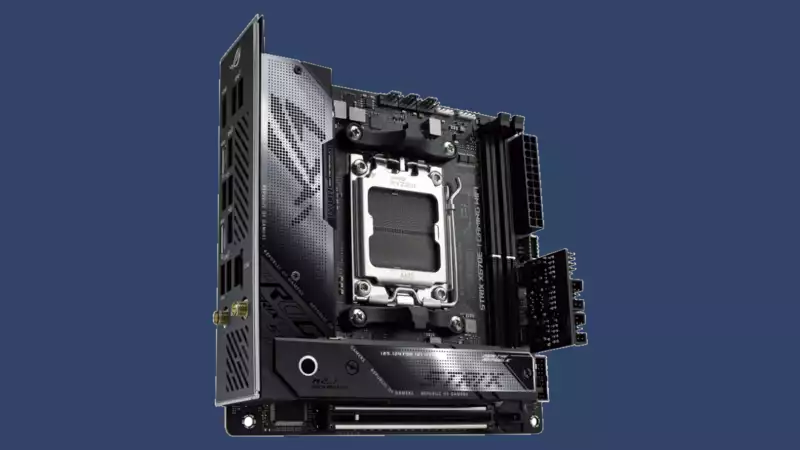Remember the distinctive and quirky Asrock motherboard (opens in new tab) that morphed from an AMD B650 board to an X670? The chipset is mounted on a PCIe stick. [Whereas AMD's B650 chipset uses a single chip known as the Promontory 21, the premium X670 chipset has two Promontory 21 chips daisy-chained together.
This is essentially a cost-effective way to add functionality and connectivity, as opposed to taping out two different chips or using one large chip and turning off various features for a low-end implementation.
In any case, Asrock's board was about quirkiness for the sake of quirkiness, whereas Asus' product is a feature for more practical concerns: the Asus ROG X670E-I is a tiny Mini-ITX, which presents a challenge for a dual-chip chipset in It is one of the models.
So, as Tom's Hardware (opens in new tab) explains, Asus put a second Promontory 21 chip on a PCIe 4.0 x4 add-on card. The result is two USB 4 Type-C ports with 40Gbps throughput, DisplayPort support, Wi-Fi 6E + Bluetooth 5.2 adapter, 2.5GbE controller, and multiple USB ports.
The Asus ROG Strix X670E-I board has two M.2 slots (one PCIe 5 spec, the other PCIe 4 spec), two SATA ports (via included add-on card), two USB4 Type-C connectors, one USB 3.2 Gen2 Type-C port, six USB 3.2 Gen1 Type-C connectors, and five USB 2.0 ports.
In addition, it features 2.5GbE and high-quality audio with Realtek ALC4050 codec and ESS Sabre 9260Q DAC.
Roughly speaking, these add-in chipset cards require specific UEFI support. Therefore, you cannot install these chipset cards on an AMD AM5 motherboard that already has a Promontory 21 chip and expect anything good to happen.
However, with the advent of these modular motherboards, it seems that at least AMD's dual-chip approach is giving motherboard makers more options.


Comments